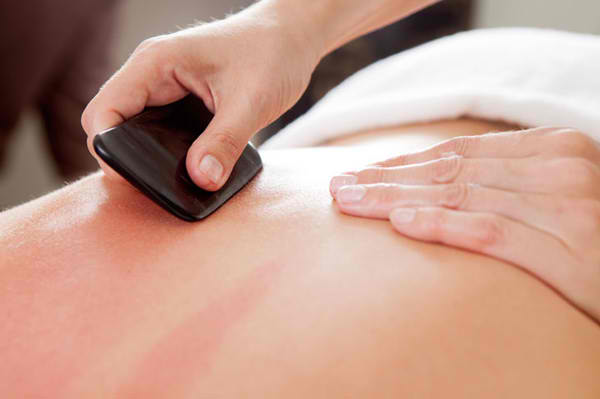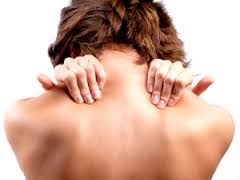
Gua Sha is a very simple and effective traditional healing technique practised widely in China, Vietnam, and other parts of East Asia. During a gua sha treatment, a round-edged instrument is used to stroke the skin in a certain area of the body. Sufficient pressure is applied so that the subcutaneous fascia is reached, and massage oil is applied to the surface of the skin to stop any discomfort from friction. The effect of gua sha treatment is to reduce blockages and to facilitate improved circulation.
With an effective gua sha treatment, the skin afterwards has a bruised look as all the stagnant blood and metabolic waste products come to the surface. This is probably one of the reasons why the technique is not widely practised in the West, because it does look a little bit unpleasant! The petechiae (which is the medical name for this marking that comes to the surface) normally fades after 3 days.
The result of removing these blockages is that the fluid and blood circulation is vastly improved in the area, and any tension or build-up of metabolic by-products in the muscles is reduced.
Practitioners use gua sha in various ways – in the treatment of pain, to treat and prevent respiratory illness, and to address digestive problems, as just some of the examples. Traditionally, in China, the technique was most commonly used to treat cholera. What I personally find it most beneficial for is in the treatment of the neck and shoulders.
The neck and shoulders is one of the areas where many people commonly hold tension. As well as pain and discomfort, this can also lead to shortening or constriction of the trapezius muscle, which affects the supply of blood to the head. Headaches and insomnia can thus result from any tension here. Posture can also be affected, leading to further tension and the creation of a vicious circle. In clinical practice, I have found nothing – not even acupuncture alone – as effective in treating the neck and shoulders to reduce this tension and to allow the muscles to relax and circulation to improve.
Aside from the skin markings left as an expression of the healing process, the other reason that can be used to explain the reticence of many western practitioners to utilise gua sha is its simplicity. This is a truly democratic form of medicine that requires very little training and no specialised equipment. However, it should be stressed that there are some contraindications for gua sha, and that it should not be attempted without formal training.
To read what Vogue magazine thought about gua sha, click here
To find out more about the scientific research that is emerging to underpin the benefits of gua sha, click here






